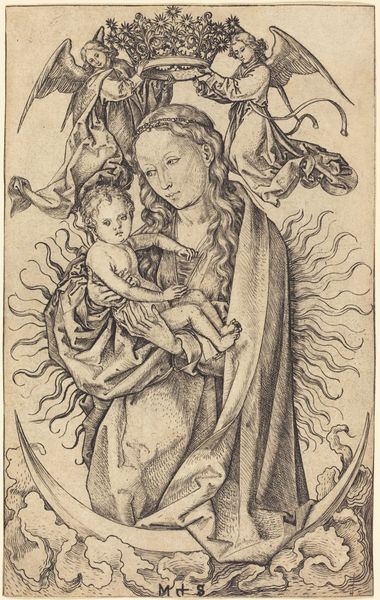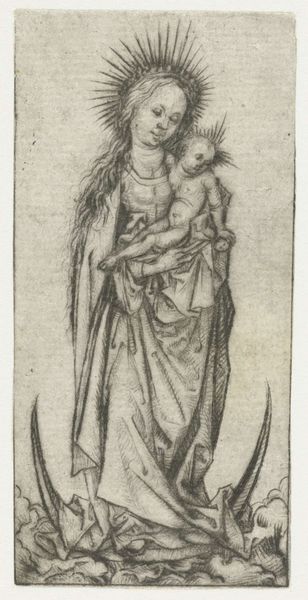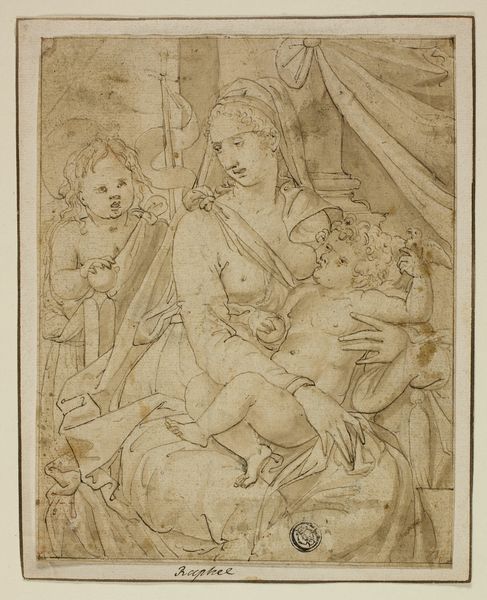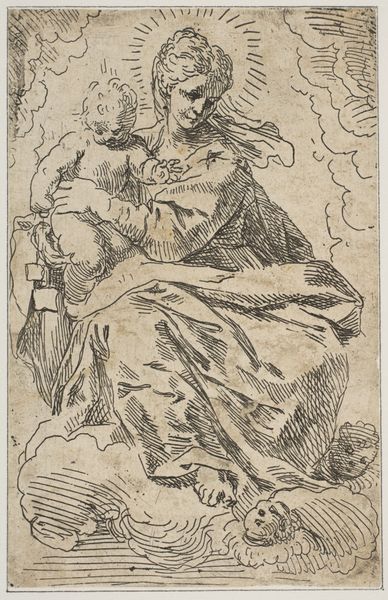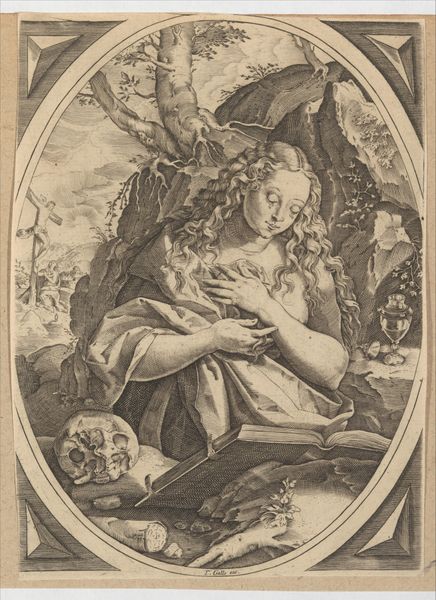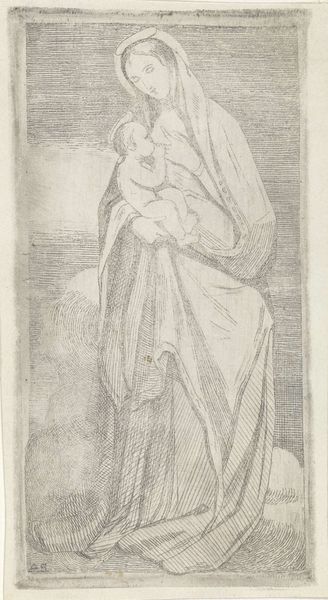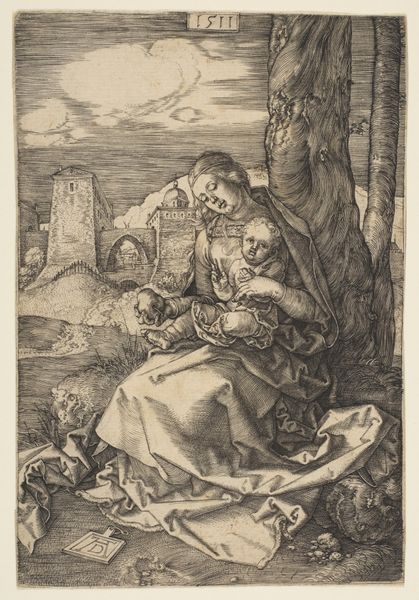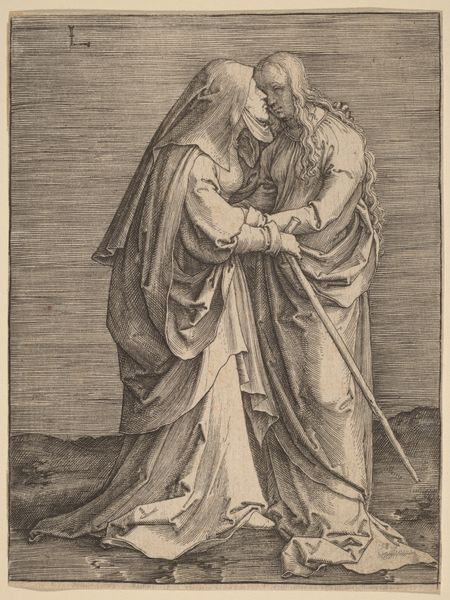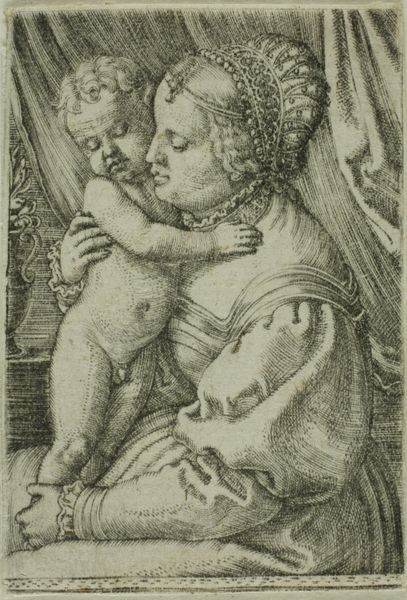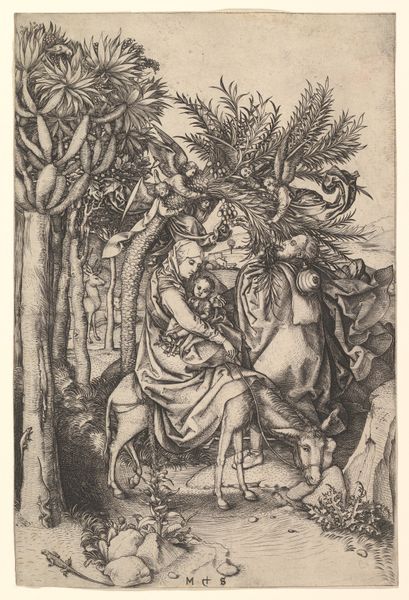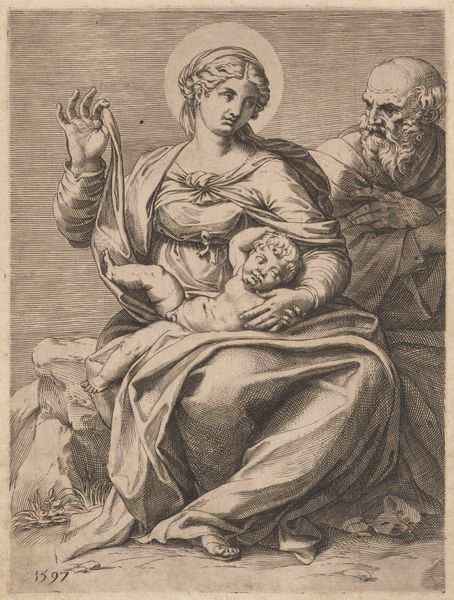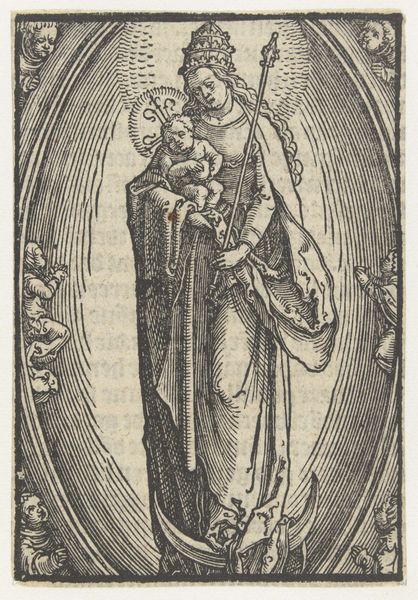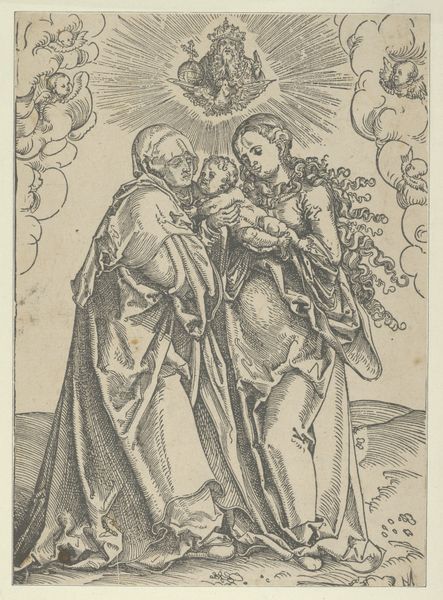
The Madonna on the Crescent Crowned by Two Angels 1470 - 1475
0:00
0:00
drawing, print, paper, engraving
#
drawing
#
toned paper
#
germany
# print
#
pen sketch
#
pencil sketch
#
junji ito style
#
paper
#
personal sketchbook
#
ink drawing experimentation
#
pen-ink sketch
#
pen work
#
sketchbook drawing
#
sketchbook art
#
engraving
Dimensions: 173 × 110 mm (sheet trimmed to platemark)
Copyright: Public Domain
Curator: Looking at this artwork, I immediately think of vulnerability. There's something so exposed about the way the figures are presented. Editor: Well, let's contextualize that vulnerability. Here we have Martin Schongauer's "The Madonna on the Crescent Crowned by Two Angels," created sometime between 1470 and 1475. This print, currently housed here at the Art Institute of Chicago, provides a really fascinating view into the social and religious climate of late 15th century Germany. Curator: Exactly! Consider the historical implications. The female body is a battleground for both spiritual devotion and social control. I'm struck by the softness of the Madonna's face in contrast with what feels like a steely gaze. Editor: I find the technical skill of this engraving compelling, given the time period. The details Schongauer achieves in the drapery, the angel's wings, and even the infant Christ's curls using only line work, speaks volumes about printmaking at the time and its rapid development. The symbolic representation of the Virgin Mary as Queen of Heaven—standing on a crescent moon—is a standard, but its handling here seems unique. Curator: Absolutely. And look at the positioning. The gaze is central to this Madonna, both her’s and our own, confronting centuries of expectations placed upon the maternal figure within both a spiritual and terrestrial setting. Is the work truly celebrating her power or trapping her further within the gilded cage? Editor: The availability of prints to a broader public starts to allow those expectations and narratives of power to disseminate in new ways—something that changes our visual culture dramatically over time. Schongauer's accessible art plays a part in democratizing religious iconography. Curator: It underscores art's enduring power, doesn’t it? To mirror, critique, and shape our understanding of the roles and representations assigned throughout society and across centuries. Editor: Precisely. It showcases the transformative role that visual representation holds in both mirroring and shifting the foundations of collective ideologies. It definitely gives you a lot to consider.
Comments
No comments
Be the first to comment and join the conversation on the ultimate creative platform.
